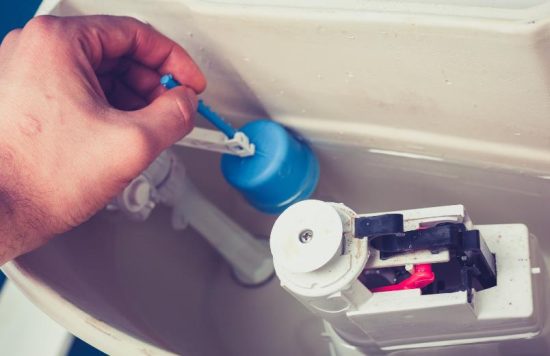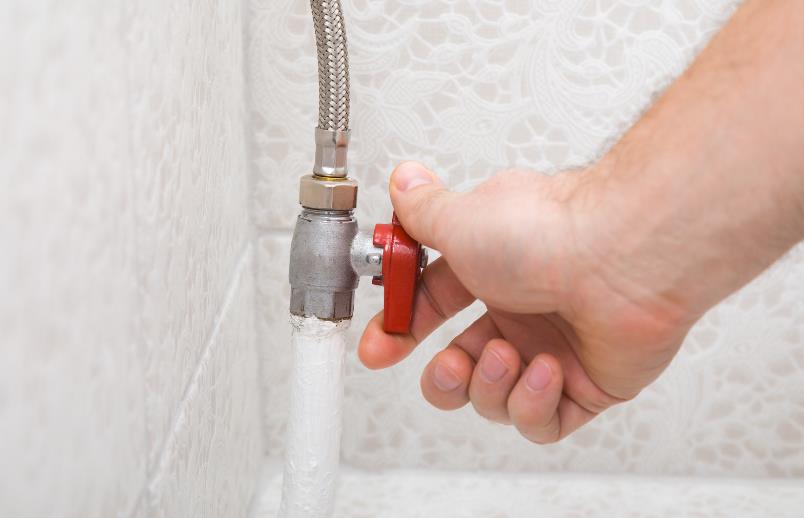When it comes to home maintenance, knowing how to turn off water to toilet can be essential, particularly in times of leaks or when embarking on repairs. This skill can help you prevent potential water damage and reduce wasted water. It’s a straightforward process that anyone can learn. Here, we’ll guide you through the steps and considerations to know how to turn off water to toilet effectively and easily.
What are the situations for turning off water in a toilet?
Here are the situations requiring you to turn off the water to your toilet, presented as individual points:
- Turn off the water if you notice a leak around the base or from the tank to prevent flooding and water damage.
- Shut off the water during routine maintenance tasks such as replacing the toilet flapper, fill valve, or handle.
- If the toilet continues to run after flushing, this indicates a malfunction that needs fixing.
- Cutting the water supply allows for thorough investigation and resolution of issues without the interference of flowing water.
- Turn off the water flow when upgrading or installing a new toilet to ensure a safe and dry work environment.
- Turn off the water if there’s a significant increase in your water bill, which could signify a hidden leak in the toilet.
- Shut off the water before vacations or extended periods away from home to prevent potential leaks or damage in your absence.
3 Methods of How to Turn Off Water to Toilet
Using the Shut-Off Valve
The easiest way to cut off the water supply to your toilet is to use the shut-off valve, which is usually located close to the area where the water line enters the toilet from the wall or floor. This valve is made to be simple to use and access. The valve must be turned clockwise until it stops to shut off the water.
Although this technique is usually dependable, these valves may corrode or grow stiff with time, making them challenging to move. Using a wrench or lubrication can assist in freeing a blocked valve, but caution must be used to prevent valve damage. This method works well for simple repairs or as a first step before more extensive work.
Shutting Off the Main Water Valve
The next step is to close the house’s primary water valve if the individual shut-off valve is unavailable, not functional, or absent. Usually found near the point where the water line enters the house, such as in a basement, next to the water heater, or on an external wall, this valve regulates the water supply to the entire property.
All plumbing fixtures will no longer get water when this valve is turned off, which is less practical but required if other valves need to be fixed. Since this method affects the water usage of the entire home, it is necessary to tell every household member. It is essential for significant plumbing repairs or when the valve on a particular fixture is damaged.
Lifting the Float in the Tank

You can use the mechanism inside the toilet tank to temporarily stop the water flow, especially if you need to act quickly and other valves are out of reach. When you remove the tank lid and lift the float arm, the water inlet valve closes, preventing water flow into the tank. This method, which saves time and money by avoiding overflow in emergencies, requires no special gear. It is only a temporary solution, though, and doesn’t take the place of maintaining or replacing the necessary shut-off valves. Once the problem has been fixed, remember to firmly replace the tank lid to avoid further damage or displacement.
Need a Pro?
Even though most people can handle turning off the water supply to their toilet, there are situations where it’s best to hire a professional. A licensed plumber should be called in to undertake more complicated plumbing tasks, such as replacing pipes or fixing significant leaks or if the shut-off valve is damaged. Experts can offer an immediate assessment and fix that ensures your plumbing is in good condition and stops future problems.
Additionally, expert assistance is frequently safer and more effective in rental properties and homes with older plumbing, shielding you from avoidable errors that could cause more severe harm. Hiring a professional also ensures compliance with local building rules, which may include specified requirements or processes for plumbing repairs. Lastly, a plumber will have the necessary tools and expertise to handle unexpected complications, providing peace of mind and saving you time and potentially higher costs.
FAQs on how to turn off water to toilet
How do I know if my toilet has a shut-off valve?
Most toilets are equipped with a shut-off valve near the toilet’s base, where the water line enters the wall or floor. Look for a small valve that can be turned by hand. It is usually shaped like a football or a simple lever.
What should I do if the shut-off valve won’t turn?
If the valve is stiff or won’t turn, avoid using excessive force to prevent breaking it. Try using WD-40, oil, or a similar lubricant to loosen it. If it still doesn’t move, it might be best to contact a professional plumber to not cause any damage.
Can turning off the water affect other parts of my home?
Turning off the toilet’s shut-off valve will only affect the water supply to the bathroom itself. However, using the main water shut-off for your home will stop water flow to all fixtures and appliances.
How often should I check the functionality of my toilet’s shut-off valve?
To ensure it remains functional, it’s a good idea to check and operate the shut-off valve at least once a year. Regular testing can prevent the valve from seizing due to mineral buildup and corrosion.

